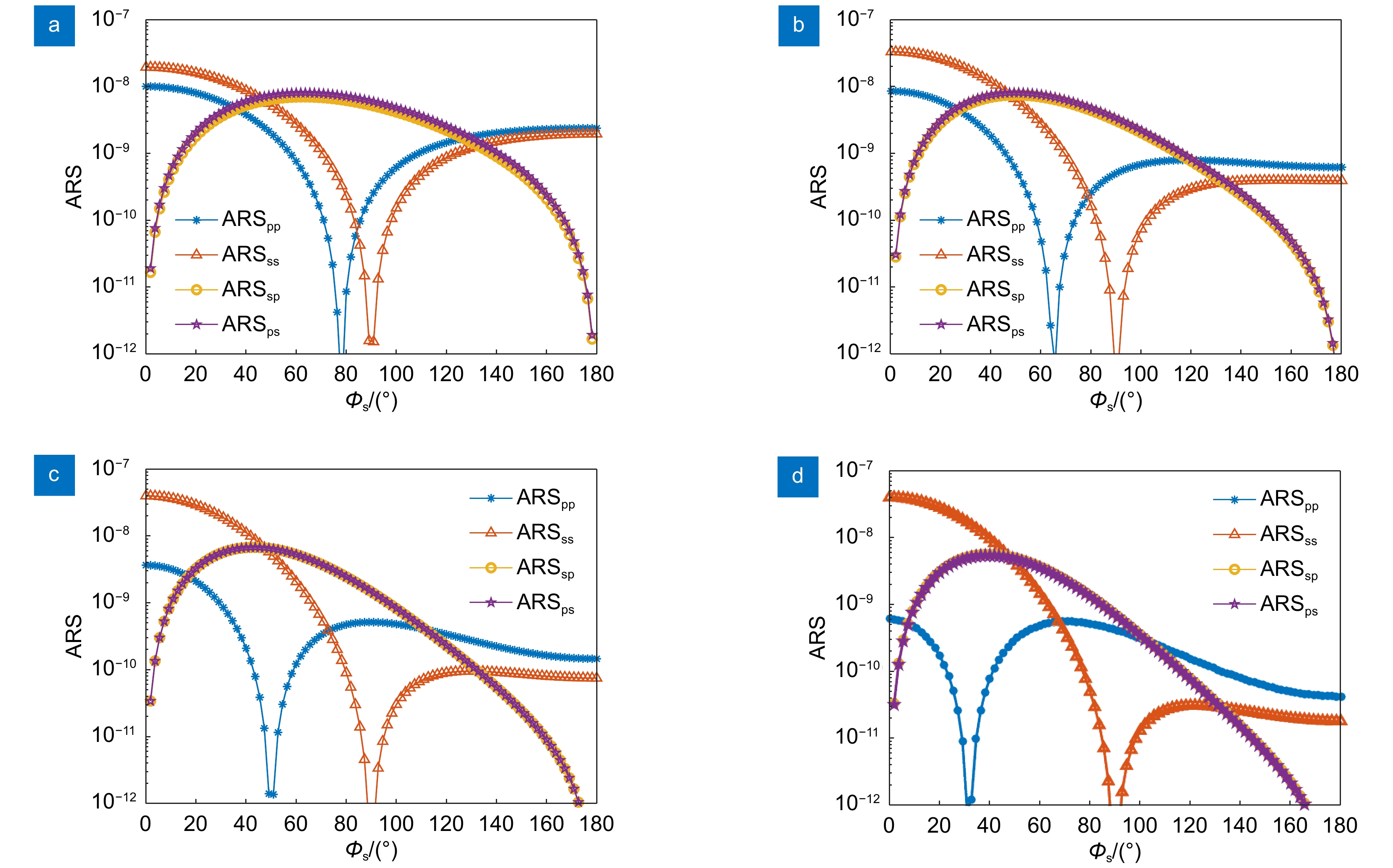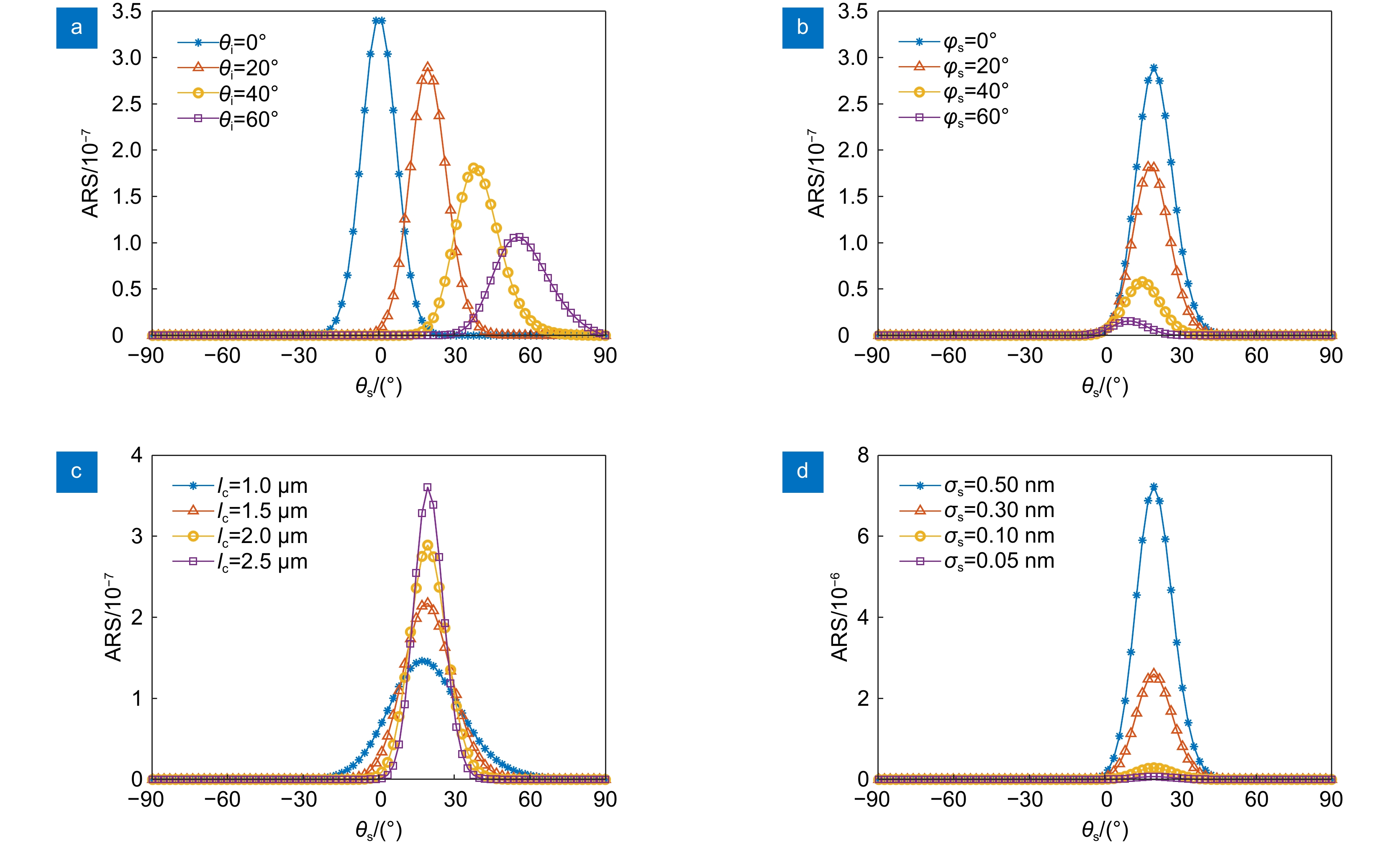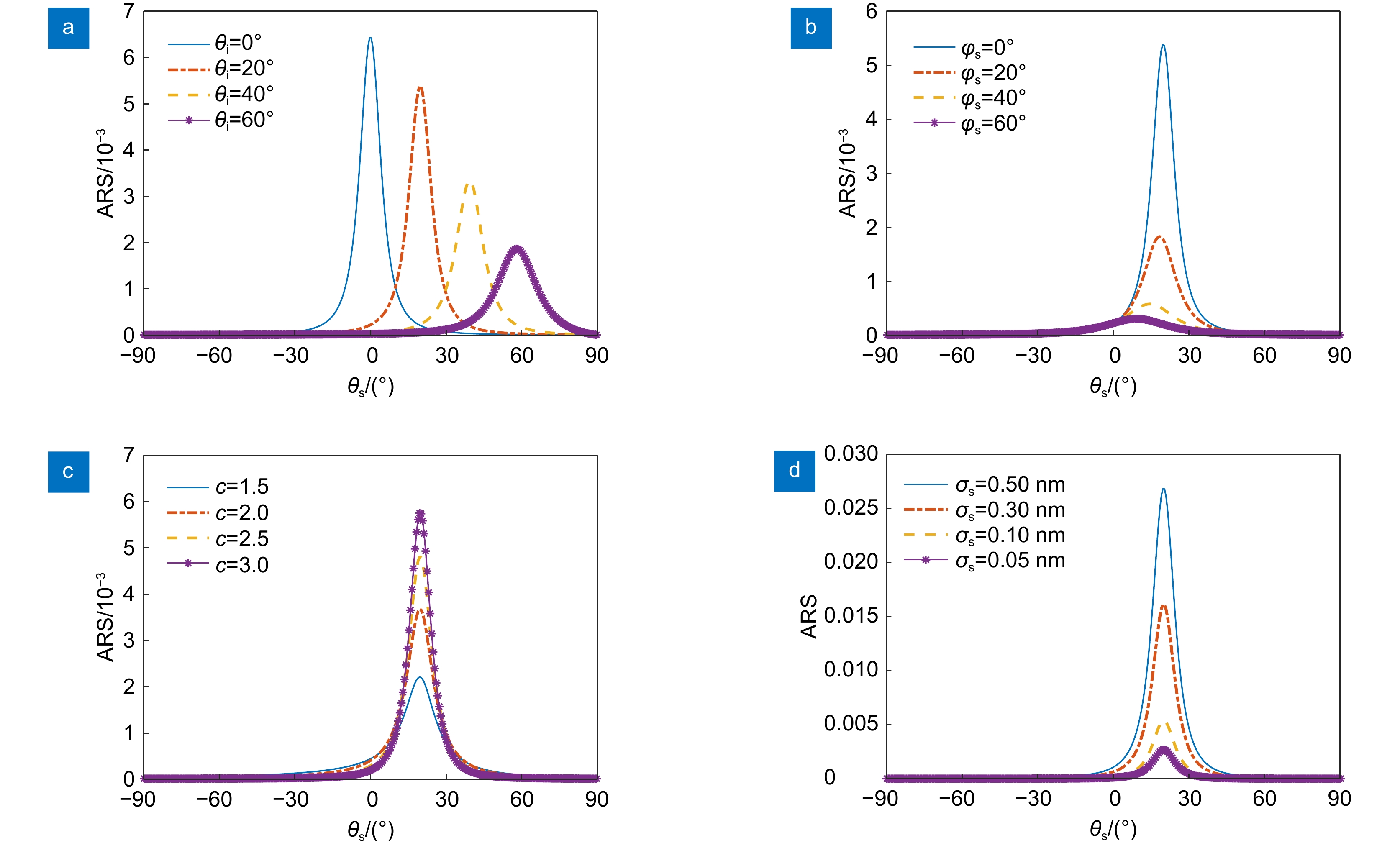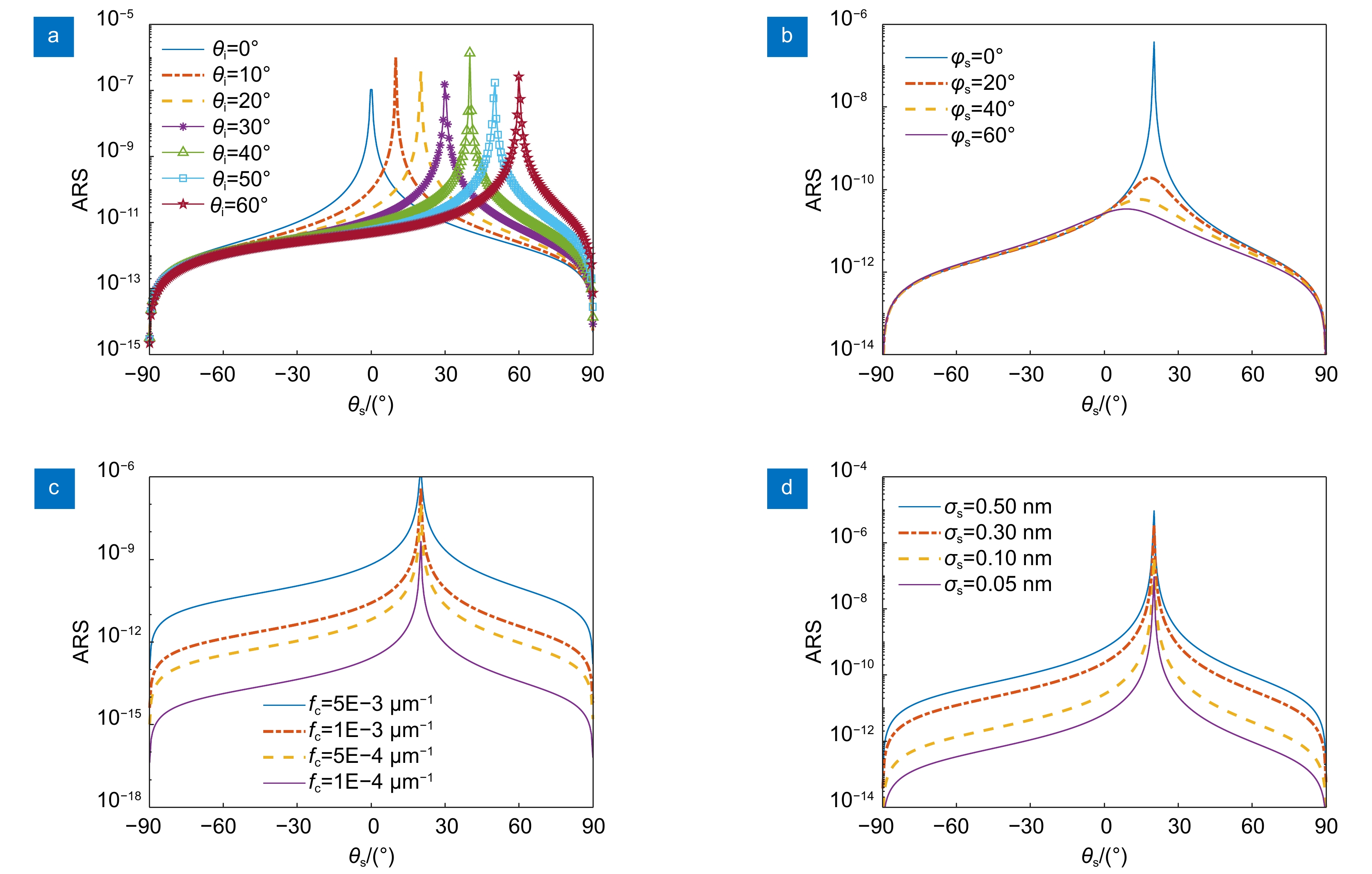Analysis of surface scattering characteristics of ultra-smooth optical components in gravitational wave detection system
-
摘要
在引力波探测系统中,超光滑光学元件表面散射特性对高精度引力波测量至关重要。本文针对超光滑光学元件,建立了一种能快速准确地分析和预测其表面散射特性的非傍轴标量散射模型Generalized Beckmann-Kirchhoff (GBK)。在此基础上,研究了入射角度、散射方位角对P偏振和S偏振入射光的角分辨散射分布的影响,以及入射角度、散射方位角、自相关长度、斜率、截止频率以及表面粗糙度等因素对不同表面统计分布特征下的角分辨散射分布的影响。研究结果可为引力波探测系统中超光滑光学元件的加工、系统杂散光的产生及抑制等提供参考。
Abstract
In gravitational-wave detection systems, the surface scattering properties of ultra-smooth optical components play a crucial role in achieving high-precision gravitational-wave measurements. To analyze and predict the surface scattering properties of ultra-smooth optical components accurately and rapidly, a non-paraxial scalar scattering model, the Generalized Beckmann-Kirchhoff (GBK) model, was built up. On this basis, the influences of both the incident angle and the scattering azimuth angle on the angular resolved scattering distributions of both P-polarized and S-polarized incident light were investigated. Under different statistical distribution characteristics of optical surfaces, the effects of incident angle, azimuth angle, autocorrelation length, slope, cut-off frequency, and surface roughness on the scattering angle resolution distribution were analyzed. The research results can provide useful references for the manufacturing of ultra-smooth optical components and the generation and mitigation of stray light in gravitational-wave detection systems.
-
Overview
Overview: In gravitational-wave detection systems, achieving a backscatter of space-borne telescopes below 10-10 or even lower is crucial to meet the design requirements. The scattering of ultra-smooth optical elements is the primary of stray light in gravitational-wave detection systems, significantly impacting high-precision gravitational-wave detection. To address this, a non-paraxial scalar scattering model, Generalized Beckmann-Kirchhoff (GBK), is proposed to analyze and predict the surface scattering characteristics of ultra-smooth optical elements in gravitational-wave detection systems. The GBK model is developed based on the Modified Beckmann-Kirchhoff (MBK) scalar scattering model, incorporating the power spectral density (PSD) function extracted from the MBK scalar scattering model and utilizing the Rayleigh–Rice (RR) vector scattering model as a standard for fitting. Comparative analyses between the GBK scalar scattering model and the RR vector scattering model under different conditions (surface roughness, incidence angle and autocorrelation length) validate the accuracy of the GBK scalar scattering model. Furthermore, the relationships between polarization angle resolved scattering (ARS) and scattering angles of isotropic elements at different incident angles, as well as the variations of different polarization ARS with scattering azimuth angles, are investigated. On this basis, this work focuses on the scattering characteristics of ultra-smooth optical element surfaces with different statistical distribution characteristics, including Gaussian, fractal, and Cauchy-Lorenz distributions. The influences of different statistical distributions of element surface, along with parameters such as incidence angle, scattering azimuth angle, autocorrelation length, slope, cut-off frequency and surface roughness, on the ARS distribution are quantitatively analyzed. The findings reveal significant variations in the scattering of P-polarized light compared to S-polarized light. With different statistical distributions of element surface, the ARS distributions consistently peak at the specular reflection. As the incidence angle, scattering azimuth angle and slope increase, the peak value of the ARS distribution gradually decreases and the width of the ARS distribution broadens. Additionally, an increase in autocorrelation length, cut-off frequency, and surface roughness leads to a rise in the peak value and narrower width of the ARS distribution. In the context of space gravitational-wave detection systems, particular attention must be paid to both the peak value and the width of the ARS distribution. The results can provide valuable references for the manufacturing of ultra-smooth optical elements and the generation and suppression of stray light in gravitational-wave detection systems.
-

-
-
参考文献
[1] 李建聪, 林宏安, 罗佳雄, 等. 空间引力波探测望远镜光学系统设计[J]. 中国光学(中英文), 2022, 15(4): 761−769. doi: 10.37188/CO.2022-0018
Li J C, Lin H A, Luo J X, et al. Optical design of space gravitational wave detection telescope[J]. Chin Opt, 2022, 15(4): 761−769. doi: 10.37188/CO.2022-0018
[2] 范纹彤, 赵宏超, 范磊, 等. 空间引力波探测望远镜系统技术初步分析[J]. 中山大学学报(自然科学版), 2021, 60(1-2): 178−185. doi: 10.13471/j.cnki.acta.snus.2020.11.02.2020B111
Fan W T, Zhao H C, Fan L, et al. Preliminary analysis of space gravitational wave detection telescope system technology[J]. Acta Sci Nat Univ Sunyatseni, 2021, 60(1-2): 178−185. doi: 10.13471/j.cnki.acta.snus.2020.11.02.2020B111
[3] Edwards T, Sandford M C M, Hammesfahr A. LISA — a study of the ESA cornerstone mission for observing gravitational waves[J]. Acta Astronaut, 2001, 48(5-12): 549−557. doi: 10.1016/S0094-5765(01)00041-8
[4] 王旭东. 超光滑光学元件表面疵病多波长散射参数测量研究[D]. 西安: 西安工业大学, 2022. https://doi.org/10.27391/d.cnki.gxagu.2022.000049.
Wang X D. Study on measurement of multi-wavelength scattering parameters of surface defects of ultra-smooth optical elements[D]. Xi’an: Xi'an Technological University, 2022. https://doi.org/10.27391/d.cnki.gxagu.2022.000049.
[5] Jiang H W, Niu X H. Stray light analysis and suppression of the visible to terahertz integrated cloud detection optical system[J]. Sensors, 2023, 23(8): 4115. doi: 10.3390/s23084115
[6] Stauder J L, Esplin R W, Zollinger L, et al. Stray-light analysis of the SABER telescope[J]. Proc SPIE, 1995, 2553: 264−270. doi: 10.1117/12.221362
[7] Park J O, Jang W K, Kim S H, et al. Stray light analysis of high resolution camera for a low-earth-orbit satellite[J]. J Opt Soc Korea, 2011, 15(1): 52−55. doi: 10.3807/JOSK.2011.15.1.052
[8] Sholl M J, Grochocki F S, Fleming J C, et al. Stray light design and analysis of the SNAP Telescope[J]. Proc SPIE, 2007, 6675: 66750C. doi: 10.1117/12.732517
[9] Rice S O. Reflection of electromagnetic waves from slightly rough surfaces[J]. Commun Pure Appl Math, 1951, 4(2-3): 351−378. doi: 10.1002/cpa.3160040206
[10] Church E L, Jenkinson H A, Zavada J M. Relationship between surface scattering and microtopographic features[J]. Opt Eng, 1979, 18(2): 125−136. doi: 10.1117/12.7972337
[11] Harvey J E. Parametric analysis of the effect of scattered light upon the modulation transfer function[J]. Opt Eng, 2013, 52(7): 073110. doi: 10.1117/1.OE.52.7.073110
[12] Stover J C, Harvey J E. Limitations of Rayleigh rice perturbation theory for describing surface scatter[J]. Proc SPIE, 2007, 6672: 66720B. doi: 10.1117/12.739133
[13] Beckmann P, Spizzichino A. The scattering of electromagnetic waves from rough surfaces[M]. Norwood, MA: Artech House, 1987.
[14] Vernold C L, Harvey J E. Modified Beckmann-Kirchoff scattering theory for nonparaxial angles[J]. Proc SPIE, 1998, 3426: 51−56. doi: 10.1117/12.328477
[15] Butler S D, Nauyoks S E, Marciniak M A. Comparison of microfacet BRDF model to modified Beckmann-Kirchhoff BRDF model for rough and smooth surfaces[J]. Opt Express, 2015, 23(22): 29100−29112. doi: 10.1364/OE.23.029100
[16] Harvey J E, Lewotsky K L. Scattering from multilayer coatings: a linear systems model[J]. Proc SPIE, 1991, 1530: 35−41. doi: 10.1117/12.50494
[17] Harvey J E. Surface scatter phenomena: a linear, shift-invariant process[J]. Proc SPIE, 1990, 1165: 87−99. doi: 10.1117/12.962839
[18] Harvey J E. Light-scattering characteristics of optical surfaces[J]. Proc SPIE, 1977, 107: 41−47. doi: 10.1117/12.964594
[19] Harvey J E, Vernold C L, Krywonos A, et al. Diffracted radiance: a fundamental quantity in nonparaxial scalar diffraction theory[J]. Appl Opt., 1999, 38(31): 6469−6481. doi: 10.1364/AO.38.006469
[20] Ma Z P, Wang H, Chen Q F, et al. Implementation of empirical modified generalized Harvey–Shack scatter model on smooth surface[J]. J Opt Soc Am B, 2022, 39(7): 1730−1735. doi: 10.1364/JOSAB.455182
[21] Harvey J E, Krywonos A, Vernold C L. Modified Beckmann-Kirchhoff scattering model for rough surfaces with large incident and scattering angles[J]. Opt Eng, 2007, 46(7): 078002. doi: 10.1117/1.2752180
[22] Krywonos A. Predicting surface scatter using a linear systems formulation of non-paraxial scalar diffraction[D]. Orlando: University of Central Florida, 2006.
[23] Stover J C. Optical Scattering: Measurement and Analysis[M]. 2nd ed. Washington: SPIE Optical Engineering Press, 1995: 48.
[24] Zhao Y P, Wu I, Cheng C F, et al. Characterization of random rough surfaces by in-plane light scattering[J]. J Appl Phys, 1998, 84(5): 2571−2582. doi: 10.1063/1.368419
[25] Sang B L, Deng X Q, Tao W, et al. Stray light analysis and suppression of Taiji telescope for space gravitational wave detection based on phase noise requirement[J]. Appl Sci, 2023, 13(5): 2923. doi: 10.3390/app13052923
[26] Priest R G, Meier S R. Polarimetric microfacet scattering theory with applications to absorptive and reflective surfaces[J]. Opt Eng, 2002, 41(5): 988−993. doi: 10.1117/1.1467360
[27] Fung A K, Li Z, Chen K S. Backscattering from a randomly rough dielectric surface[J]. IEEE Trans Geosci Remote Sens, 1992, 30(2): 356−369. doi: 10.1109/36.134085
[28] Feller W. An Introduction to Probability Theory and Its Applications, Volume 2[M]. 2nd ed. New York: John Wiley & Sons Inc, 1971: 704.
[29] 张英鸽. 光学元件表面微观形貌的光学散射特性研究[D]. 西安: 西安工业大学, 2017.
Zhang Y G. Study on optical scattering characteristics of surface micromorphology for optical elements[D]. Xi’an: Xi'an Technological University, 2017.
[30] 张科鹏. 基于散射测量的光学元件表面质量评估方法研究[D]. 成都: 中国科学院大学(中国科学院光电技术研究所), 2019.
Zhang K P. Assessing surface quality for optical components by light scattering measurement[D]. Chengdu: University of Chinese Academy of Sciences (Institute of Optics and Electronics, Chinese Academy of Sciences), 2019.
-
访问统计


 E-mail Alert
E-mail Alert RSS
RSS
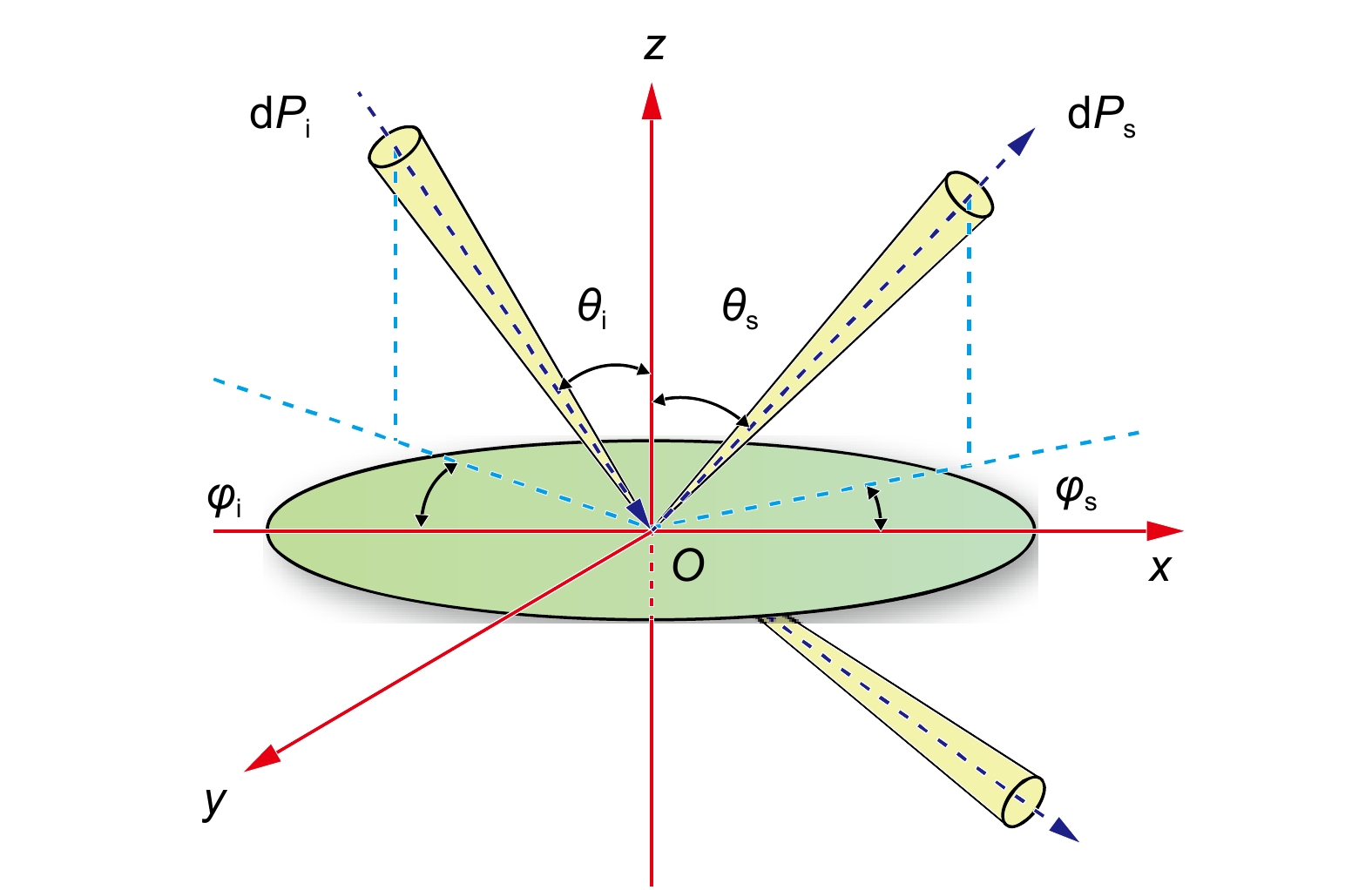
 下载:
下载:



